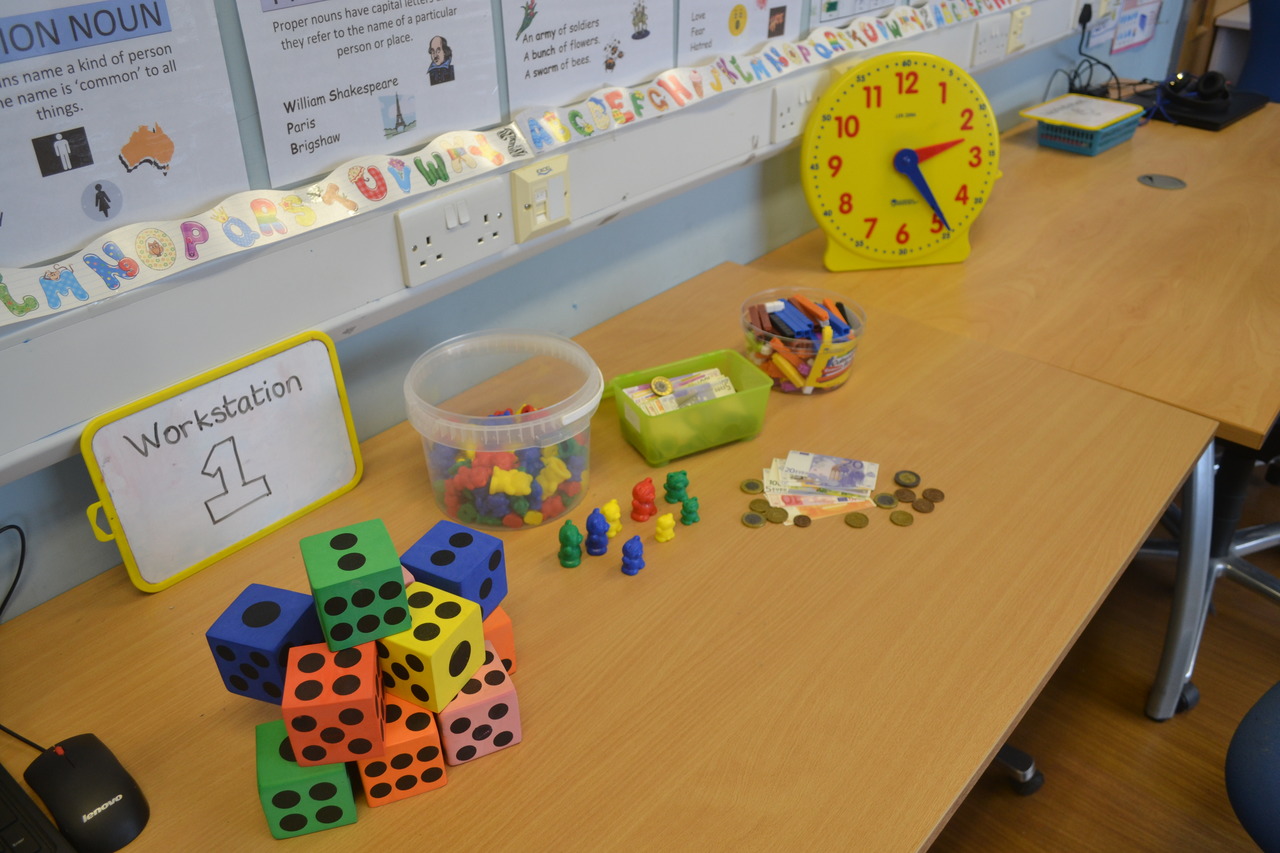Have you ever wondered why your child struggles with maths? As parents, we often see firsthand the problems our children have and the struggles they experience in maths. Watching them struggle with grasping new concepts or trying – and failing – at familiar ones is frustrating. This blog post will help you better understand the common challenges your child may be going through.

Struggles with Maths: The Puzzle of Place Value
What is place value? Simply put, it is the foundation for understanding the value of digits in numbers. It is knowing a digit’s value and position within a number. When children understand place value, they realise that ten units make a ten, and 10 tens make a hundred. They can see how numbers can be put together and how they can be expanded to show the value of individual digits.
Why do children struggle with maths?
Children often have confusion over the role of digits in numbers, for example, understanding that “1” in 13 represents 10, not just a single unit. This becomes even more challenging when they start to work with larger numbers. Have you ever noticed that the ‘teen’ numbers are hard work because we say the ‘teen’ part last but we write it first?!
It can also be a problem for them to understand how and why 100 is a bigger number than 99, They may not have grasped the concept of our number system being based on groups of ten, and how 100 is made up of ten lots of ten. When dealing with bigger numbers, children sometimes can not visualise them or relate them to something in real life, like 250km between two cities or a football stadium holding 50,000 people.
Common signs parents might notice
If your child struggles with maths, you might notice mistakes in reading or writing numbers, trouble with understanding larger numbers, or hesitation with tasks involving “borrowing” or “carrying.”
Method Errors in Calculations Leading to Struggles with Maths
Common calculation errors
Children often make mistakes in adding, subtracting, multiplying, and dividing—especially when more than one step is involved. So, the question is… why does this happen?
Children may remember steps but not why the steps are necessary. For example, they may remember they should carry a number over when adding if it is bigger than 10, but not know why, so this could lead to carrying the wrong digit.
They might not think a problem through logically. By skipping mental checks or failing to use estimation as a checking tool, they may end up with a solution that is so far off the mark that it doesn’t make sense. Take dividing or subtracting – children who don’t carry out a mental check could end up with an answer larger than the amount they started with and not understand why they are incorrect.
Your child could also simply have a lack of fluency in basic arithmetic, which often leads to method breakdown in more complex problems.
So how can you help them deal with these issues? Look out for over-reliance on guessing, jumping to answers too quickly, or skipping critical steps.

Number Bonds and Mental Arithmetic Causing Struggles
What are number bonds?
Put simply, they are the ‘partner’ numbers to make certain totals. we often talk about number bonds to 10 (e.g., knowing 8 + 2 equals 10 instantly) and 20. Helping children to realise that the ‘teen’ number in the bonds to 20 is just an added 10 to one of the numbers in the bonds to ten can take some time.
Why do children struggle?
Children often experience difficulty with memorising and recalling number bonds, especially when they feel under pressure. Have you seen your child do this? If so, it could be because they feel pressure and have gone blank or there could be a deeper problem with their grasp of the number bonds.
In general, society feels that children need to be able to recall bonds mentally and we put this pressure on children who are not quite ready to move on to this level. The abstract nature of working with numbers without a concrete or visual anchor is a huge leap to make, so we need to let children spend more time with resources and manipulatives that help them build up confidence, such as cubes, Deines blocks and Cuisenaire rods.
Another reason why many children face struggles in maths is down to a misunderstanding that these simple number patterns are building blocks for more advanced math concepts, such as fractions and percentages. If they master the bonds and can recall them instantly, they are laying down the foundations for more complex maths topics later. Without this solid foundation, it is almost certain that they will find maths increasingly difficult as they get older.
Common signs to look out for include a slower problem-solving speed, finger-counting, or getting “stuck” when mental arithmetic is required.
Struggles with Word Problems
Word problems cause anxiety in many children. They may have a good grasp of numbers, but word problems require a blend of reading comprehension and maths skills. Children sometimes find it difficult to identify which operations – addition, subtraction, multiplication or division – the problem is asking for. There is then the added challenge of interpreting everyday real-life scenarios in a mathematical context.
Why does this happen?
Children often get muddled with the language of maths – just think of words like “more” or “less”, and all the different vocabulary associated with adding and subtracting. Sometimes, children also get confused about the steps needed to solve multi-part problems. In addition, there is often an underlying lack of confidence in their ability to apply maths concepts in real-life situations. It is always good to let your child see how maths is used in real-life situations. Click here to read about ways to make maths fun at home.
What to look out for:
You might see your child avoiding word problems, getting stuck on the first step, or solving problems without fully reading the question.
The Mental Block with Times Tables and Multiplication
Why multiplication trips kids up
Times tables require repetition and memorisation, which many children find tedious or overwhelming. Remember the fear of standing and reciting the times tables as a child? I certainly do! I was always terrified that the teacher was going to pick me next to answer a random question.

Many children have difficulty understanding multiplication. Although they can initially see the patterns as a form of repeated addition, they end up getting lost in larger numbers. Indeed, many adults are not proficient in their times tables. If you want to look at helping your child learn their times tables, you can pick up a copy of Master Your Times Tables in a Month or you can read more about my multiplication course and book here.
Why children struggle
Children need to practice and use multiplication facts regularly to master them. A lack of daily reinforcement can often lead to gaps in understanding and knowledge because times tables aren’t used frequently enough in the day-to-day work your child might be doing. Make time to learn them! Rote memorisation without a deep understanding of how multiplication works conceptually does not serve a child well – just ask any adult who struggled with this method at school!
What to look out for
If your child has difficulty recalling multiplication facts, relying on counting strategies instead of memory, or is hesitant when encountering multiplication problems, they will be probably be experiencing issues with remembering multiplication facts.
Fractions, Decimals, and Percentages—The Abstract Trio
Why are these topics especially challenging? Many children are often confused by the abstract nature of fractions, decimals, and percentages. These are probably the three topics I have tutored most in the last decade while working with upper primary-aged students. There seems to be a huge misunderstanding in the relationships between fractions, decimals and percentages. For example, how ½ equals 0.5 and 50%.
Why does this happen?
Many children have difficulty visualising parts of a whole and transitioning from whole numbers to parts. It is partly because they move on to abstract work before they are really secure enough with physical hands-on work using decimals, fractions and percentages.
Common signs to look out for
You may see your child struggling with equivalent fractions, converting between fractions and decimals, or applying percentages in real-world problems.
Math Anxiety and Confidence Issues – The Emotional Side of Math Struggles
Some children develop anxiety or a fear of failure when faced with math challenges. This is very different from having additional learning needs in maths, but can sometimes look similar on the outside.
Why does this happen?
Past struggles can lead to low confidence, making children more likely to freeze up when faced with new or harder math concepts. The pressure from timed tests, expectations, or fear of getting the answer wrong can cause anxiety, further blocking their learning. They literally freeze and give up.
What parents might see
You may see your child expressing frustration, avoiding maths homework, or showing physical signs of anxiety when maths is mentioned.
Next Steps
If you recognise your child in any of the points raised, it is important to understand the challenges they face. This is the first step in supporting your child’s maths journey. With the right strategies and encouragement, these challenges can be overcome.
I have a parents’ course to help your child struggling with maths, where I help you explore the reasons your child finds maths difficult. We look at common errors and discuss how you can best support your child at home. I also give you tips and advice about what you should include in your Maths Toolbox.
Want to know more about how to support your child who struggles with maths? Email elaine@emeraldeducatiocentrebundoran.com or direct message me to discuss how I can help you support you.
